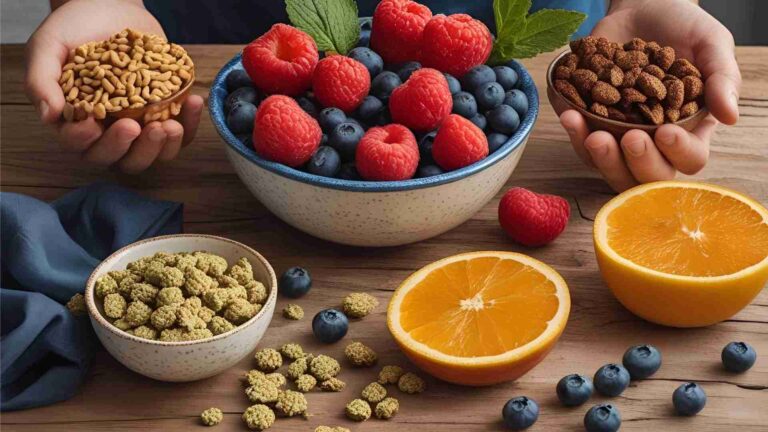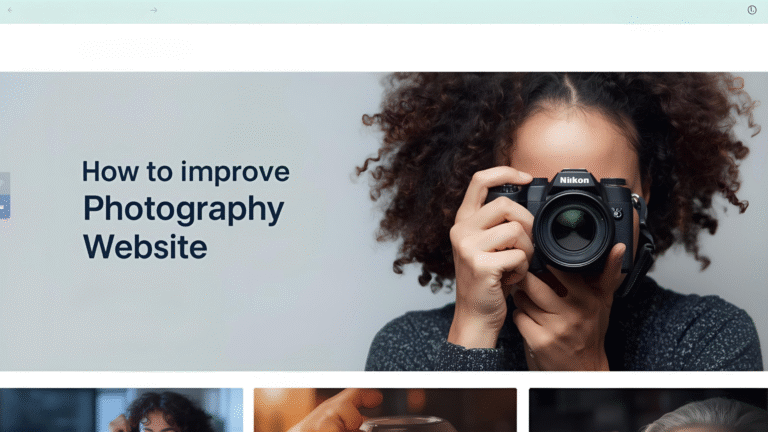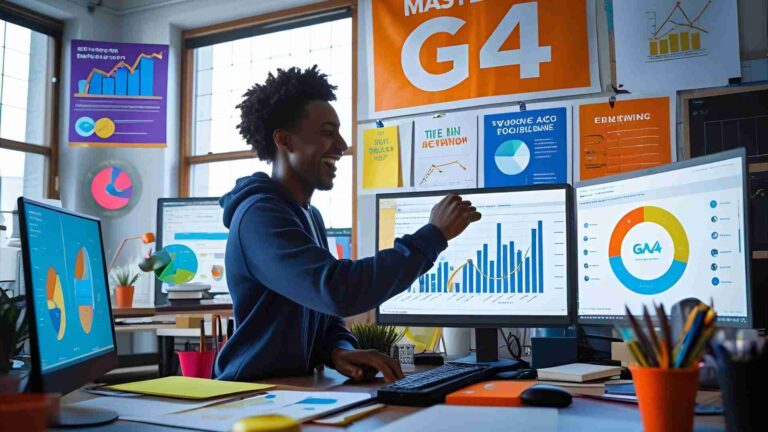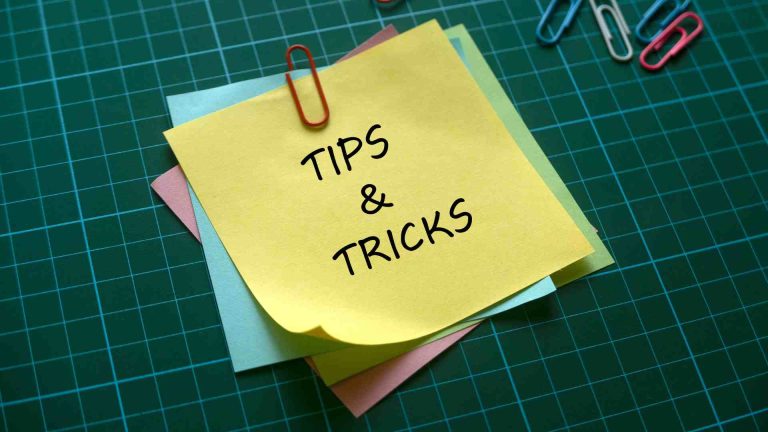Photography Home Studio Equipment
A home photography studio is a transformative investment for photographers of all levels, from beginners capturing personal projects to seasoned professionals delivering client work. In an era where digital content creation is booming, a well-equipped studio offers unparalleled creative control, cost savings, and workflow efficiency. This guide dives deep into every facet of establishing a home studio, covering benefits, planning, equipment selection with detailed specifications, budget-friendly setups, advanced tools, DIY solutions, software, maintenance, safety, real-world case studies, and marketing strategies to monetize your space. Drawing from expert insights, industry trends, and user experiences, this resource provides a definitive roadmap to create a professional-grade studio in any home environment—be it a spare bedroom, garage, or compact apartment corner.
Why Build a Home Photography Studio?
The shift toward home-based creative spaces has accelerated, with over 65% of freelance photographers now operating studios from home, according to the Photography Business Institute. This trend reflects the democratization of photography tools—compact mirrorless cameras, affordable LED lighting, and AI-driven editing software—making professional setups accessible without the overhead of commercial rentals. Here’s why a home studio is a game-changer:
Key Benefits
- Cost Efficiency: Commercial studio rentals cost $50–$250 per hour in urban areas. A home setup, even at $5,000, can break even in under a year with consistent client work or stock photography sales (e.g., Shutterstock contributors report $500–$2,000 monthly earnings).
- Creative Freedom: Shoot anytime without scheduling constraints. Experiment with lighting setups, backdrops, or genres (portraits, product, macro) to refine your style.
- Skill Development: Limited space forces innovative problem-solving, such as using reflectors for light bounce or wide-angle lenses in tight quarters. A 2025 survey by Digital Photography School found 78% of home studio users improved technical proficiency within 12 months.
- Customizable Workflow: Tailor your space to your niche—soft lighting for newborn photography, vibrant setups for fashion, or minimal tables for product shots. Personal touches (e.g., ergonomic chairs, $50) enhance comfort.
- Revenue Streams: Beyond client work, rent your studio on platforms like Peerspace ($200–$600/session) or sell digital presets based on your lighting setups ($10–$50 each).
- Remote Collaboration: Post-pandemic norms favor remote workflows. Tethered shooting to laptops or cloud-based client reviews (via Google Drive or Dropbox) streamline projects.
Challenges to Address
- Space Constraints: Small rooms limit subject distance or lighting angles.
- Lighting Control: Unwanted ambient light requires blackout solutions.
- Noise and Distractions: Household activity can disrupt shoots.
- Initial Costs: Balancing quality and affordability is critical.
Planning Your Home Studio: Key Considerations
Success hinges on meticulous planning. Before purchasing gear, assess your space, niche, budget, and long-term goals. Here’s a detailed breakdown.
1. Define Your Photography Niche and Goals
Your niche dictates equipment and space needs:
- Portraits/Headshots: Requires 3m x 4m space, softboxes for flattering light, neutral backdrops ($40–$100).
- Product/E-Commerce: Compact 2m x 3m setups, macro lenses, diffusion panels for even light.
- Fashion/Full-Body: Larger 5m x 6m areas, multiple strobes, dynamic backdrops.
- Video Content: Continuous lights, fluid-head tripods, microphones ($50–$200).
- Newborn/Pet Photography: Props like wraps ($15) and beanbags ($50).
- Fine Art/Macro: Specialized lenses, focus stacking software.
Goals: Are you a hobbyist building skills, a freelancer targeting $2,000/month, or a pro scaling to $50,000/year? This informs budget allocation ($500 for basics, $5,000+ for professional setups).
2. Space Assessment and Optimization
Evaluate your available space:
- Minimum Requirements: 3m x 3m x 2.5m ceiling for portraits/products. Allows one subject, one light, and a backdrop.
- Ideal Setup: 5m x 8m x 3m ceiling for multiple subjects, overhead lighting (e.g., boom stands, $100).
- Small Spaces: Corners or hallways (1.5m x 2m) work with wide lenses and portable gear.
Optimization Tips (from 2025 Expert Photography guide):
- Flooring: Matte vinyl or painted concrete ($50–$200) reduces reflections.
- Walls: Neutral gray/white paint ($30/gallon) minimizes color casts.
- Multi-Use Design: Foldable tables ($50), Murphy beds ($500), or rolling carts ($80) save space.
- Acoustics (for Video): Add foam panels ($30 for 12) to reduce echo.
Space Comparison Table
| Niche | Min. Space | Ceiling | Challenges | Solutions |
|---|---|---|---|---|
| Portraits | 3m x 4m | 2.5m | Limited subject distance | 24-70mm lens, reflectors |
| Products | 2m x 3m | 2m | Precise lighting | Diffusion scrims, macro lenses |
| Fashion | 5m x 6m | 3m | Full-body framing | Larger backdrops, booms |
| Video | 4m x 5m | 2.5m | Continuous setup | LED panels, gimbals |
3. Lighting Fundamentals
Lighting shapes your images’ mood and quality. Options include:
- Natural Light: Free but weather-dependent. Requires large windows and diffusers ($20).
- Artificial Light: Consistent, controllable. Includes continuous (for video) and strobes (for stills).
Control Tips:
- Block Ambient Light: Blackout curtains ($20–$80) or foam boards ($10).
- Power Management: Use surge protectors ($15) and extension cords ($10) for multiple lights.
4. Storage and Organization
Clutter disrupts workflow and safety. Solutions:
- Shelving: Wall-mounted units ($50–$200) for lenses, props.
- Pegboards: $20, with hooks for cables/light modifiers.
- Rolling Carts: $80–$150 for mobile gear access.
- Labeling: $5 bins for small items (SD cards, batteries).
Safety Tip: Secure heavy gear with straps ($10) to prevent tipping.
5. Budget Planning
Allocate funds strategically: 40% lighting, 30% camera/lenses, 15% accessories, 10% software, 5% props/storage.
Phased Investment:
- Phase 1 (Beginner, $500–$1,500): Basic camera, one light, backdrop.
- Phase 2 (Mid-Level, $1,500–$3,000): Upgraded camera, multiple lights, modifiers.
- Phase 3 (Pro, $3,000–$10,000): Full-frame camera, advanced strobes, automation tools.
ROI Example: Charging $150/session, 15 sessions ($2,250) recoup a $2,000 setup.
Chart: Budget Allocation

Essential Photography Studio Equipment: In-Depth Breakdown
Below is a curated list of equipment, with specifications, 2025 prices (sourced from Amazon, B&H Photo, Best Buy), pros/cons, and usage tips. All gear is selected for versatility and durability.
1. Cameras
The heart of your setup. Mirrorless cameras dominate for their compact size, fast autofocus, and hybrid (photo/video) capabilities.
-
Beginner: Canon EOS R10 w/18-150mm Lens
- Specs: 24.2MP APS-C CMOS, 23fps burst, 4K 30p (cropped), 651 AF points, ISO 100-32,000, 2.36M-dot EVF, 3″ vari-angle LCD.
- Pros: Lightweight (429g), budget-friendly, excellent AF for portraits.
- Cons: Crop sensor limits low-light performance; no in-body stabilization.
- Price: $1,449 (B&H Photo).
- Best For: Beginners, headshots, casual video.
-
Pro: Sony a7 IV w/28-70mm Lens
- Specs: 33MP full-frame BSI CMOS, 10fps, 4K 60p (cropped), 759 AF points, ISO 50-204,800, 3.68M-dot EVF, 3″ tilting LCD.
- Pros: Superior dynamic range, pro-grade video, weather-sealed.
- Cons: Heavier (658g), higher cost.
- Price: $2,399 (Amazon).
- Best For: Professional portraits, video, low-light.
User Insights (Digital Camera World 2025): R10 earns 4.7/5 for value; a7 IV scores 5/5 for versatility, with users praising its color science.
Comparison Table: Cameras
| Model | Sensor | Burst | Video | AF Points | ISO | Weight | Price | Best For |
|---|---|---|---|---|---|---|---|---|
| Canon R10 | 24.2MP APS-C | 23fps | 4K 30p | 651 | 100-32,000 | 429g | $1,449 | Beginners |
| Sony a7 IV | 33MP Full-Frame | 10fps | 4K 60p | 759 | 50-204,800 | 658g | $2,399 | Pros, hybrids |
Tips:
- Test camera ergonomics in-store if possible.
- Pair with fast SD cards (UHS-I, $30) for burst shooting.
2. Lenses
Lenses define image quality and creative style.
-
Tamron 28-75mm f/2.8 Di III VXD G2 (Sony E)
- Specs: 17 elements, VXD linear motor, f/2.8 constant aperture, 0.18m min focus, 67mm filter, weather-sealed.
- Pros: Sharp across range, fast AF, versatile for portraits/products.
- Cons: No image stabilization; slight vignette at 28mm.
- Price: $849 (Best Buy).
- Best For: Portraits, events, video.
-
Budget Alternative: Canon RF 50mm f/1.8 STM
- Specs: 6 elements, f/1.8, 0.3m min focus, 43mm filter.
- Pros: Compact, affordable, great bokeh.
- Cons: Fixed focal length.
- Price: $199 (Amazon).
Tips:
- Use 50mm for classic portraits; 24-70mm for versatility.
- Clean lenses weekly with microfiber ($5) to avoid dust spots.
3. Lighting Systems
Lighting is the backbone of studio photography, controlling mood, texture, and clarity. Options: continuous (real-time feedback, video-friendly), strobes (powerful, freeze motion), or speedlights (portable).
Continuous Lights
-
Godox SL60IIBi
- Specs: 60W LED, 2800-6500K bi-color, CRI 96+, TLCI 97+, 11 effects, app control, Bowens mount, 25,600 lux at 1m.
- Pros: Silent fan, versatile color temp, budget-friendly.
- Cons: Lower output for large scenes.
- Price: $149 (kit with softbox, $199) (B&H).
- Best For: Video, product, small setups.
Strobes
-
Westcott FJ200 2-Light Kit
- Specs: 200Ws per head, 0.05-1.3s recycle, 450+ flashes/battery, HSS to 1/8000s, TTL, 5,600K, Bowens mount.
- Pros: Compact (2.1kg), wireless trigger, reliable for portraits.
- Cons: Battery life dips in cold; smaller power range.
- Price: $969.90 (Amazon).
- Best For: Portraits, events.
-
Westcott FJ400 2-Light Backpack Kit
- Specs: 400Ws, 0.05-0.9s recycle, AC/DC power, HSS, 36,000 flashes/charge.
- Pros: High power, portable with backpack.
- Cons: Heavier (2.4kg/head).
- Price: $1,079.90 (B&H).
- Best For: Fashion, large setups.
-
Profoto B10 (Used)
- Specs: 250Ws, 0.05-2.5s recycle, TTL, 5,000K, battery-powered, 10 f-stops.
- Pros: Premium build, intuitive controls.
- Cons: Discontinued; used market only.
- Price: $1,363.95 (used, B&H).
- Best For: Pros, location work.
Speedlights
- Godox V1: 76Ws, 1.5s recycle, TTL, lithium battery. Price: $259.
Lighting Comparison Table
| Type | Model | Power/Color | CRI | Recycle | Features | Price | Pros/Cons |
|---|---|---|---|---|---|---|---|
| Continuous | Godox SL60IIBi | 60W/2800-6500K | 96+ | N/A | App, effects | $149 | Affordable/low power |
| Strobe | Westcott FJ200 Kit | 200Ws/5600K | N/A | 0.05-1.3s | HSS, battery | $969.90 | Compact/limited range |
| Strobe | Westcott FJ400 Kit | 400Ws/5600K | N/A | 0.05-0.9s | AC/DC | $1,079.90 | Versatile/heavier |
| Strobe | Profoto B10 | 250Ws/5000K | N/A | 0.05-2.5s | TTL | $1,363.95 | Premium/used only |
Tips:
- Use gray cards ($10) for white balance.
- Start with one key light; add fill lights as budget allows.
4. Light Modifiers
Modifiers shape light for softness, direction, or drama.
-
Westcott 26″ Octagonal Softbox
- Specs: Bowens mount, silver interior, grid compatible, collapsible.
- Pros: Soft, even light; portable.
- Cons: Smaller diffusion area.
- Price: $99 (Amazon).
- Best For: Portraits, small products.
-
Westcott 36″ Octagonal Softbox
- Specs: Larger diffusion, Bowens mount.
- Pros: Wraparound light for groups.
- Cons: Bulkier setup.
- Price: $199 (B&H).
-
Westcott 45″ White/Black Umbrella
- Specs: Shoot-through or reflective, collapsible.
- Pros: Quick setup, affordable.
- Cons: Less precise control.
- Price: $37.90 (Amazon).
Tips:
- Octagonal softboxes create round catchlights, ideal for eyes.
- Use grids ($30) to focus light and reduce spill.
5. Light Stands and Supports
-
Kupo Universal Black Stand
- Specs: 12.5ft max height, 19.8lb load, aluminum, 3-section.
- Pros: Sturdy, versatile height.
- Cons: No wheels.
- Price: $82 (B&H).
- Best For: Strobes, softboxes.
-
Neewer 700W Kit (Includes Stands)
- Specs: 6.5ft, aluminum, with softboxes, 45W bulbs.
- Pros: All-in-one budget solution.
- Cons: Limited height.
- Price: $91.49 (Amazon).
Safety Tip: Use sandbags ($15) for stability in windy conditions or with heavy modifiers.
6. Tripods
-
Manfrotto 055 Kit
- Specs: 66.93″ max height, 44lb load, aluminum, 3-section, fluid head option.
- Pros: Robust, versatile.
- Cons: Expensive.
- Price: $569.95 (B&H).
- Best For: Video, heavy cameras.
-
Fotopro X-go
- Specs: 59″ height, 17.6lb load, carbon fiber, 4-section.
- Pros: Lightweight (1.1kg).
- Cons: Lower capacity.
- Price: $109 (Amazon).
-
Fotopro X-go Plus
- Specs: 68″ height, 20lb load.
- Price: $259.
Tips: Use tripods for tethered shooting or long exposures; level bubbles ensure alignment.
7. Backdrops and Support Systems
-
Savage Seamless Paper (53″ White)
- Specs: 36ft roll, non-reflective, recyclable.
- Pros: Clean, professional look.
- Cons: Tears easily; needs frequent replacement.
- Price: $44.99 (Amazon).
- Best For: Portraits, products.
-
Neewer Backdrop Support System
- Specs: 10ft wide, 6.6ft max height, aluminum, portable.
- Pros: Easy setup, budget-friendly.
- Cons: Limited height for tall subjects.
- Price: $59.99 (Amazon).
Chart: Backdrop Setup Options

Tips:
- Use clamps ($5) to secure paper rolls.
- Store rolls vertically to prevent creases.
8. Tethering and Accessories
-
Tether Tools 15ft Orange USB 3.0 Cable
- Specs: Shielded, high-visibility, USB-A to USB-C.
- Pros: Reliable for live previews.
- Cons: Limited length for large studios.
- Price: $39.99 (B&H).
- Best For: Tethered shooting to laptops.
-
Delkin Black 64GB SD Card (x2)
- Specs: UHS-I, 90MB/s read, 45MB/s write, waterproof.
- Pros: Fast, durable.
- Cons: Not UHS-II.
- Price: $29.99 each (Amazon).
-
WD 1TB Elements Portable HDD
- Specs: USB 3.0, compact, 5Gbps transfer.
- Pros: Ample storage for RAW files.
- Cons: HDD slower than SSD.
- Price: $99 (Best Buy).
-
Sabrent USB Card Reader
- Specs: Supports SD/CF/microSD, USB 3.2.
- Price: $19.97 (Amazon).
-
Neewer A-Clamp (4-Pack)
- Specs: Metal, 3″ jaw, rubber grips.
- Price: $13.42 (Amazon).
-
Westcott 5-in-1 Reflector (42″)
- Specs: Gold, silver, white, black, diffuser surfaces, collapsible.
- Pros: Versatile, portable.
- Cons: Requires assistant or stand.
- Price: $49.90 (Amazon).
-
ProTapes Gaffer Tape (2″ x 30yd)
- Specs: Residue-free, black.
- Price: $17.89 (Amazon).
Tips:
- Tether to Lightroom/Capture One for instant previews.
- Backup files daily to HDD and cloud (Google Drive, $10/month).
9. Props and Furniture
-
V-Flat World Geometric Cubes (8-Pack)
- Specs: Foam, waterproof, various sizes.
- Pros: Lightweight, versatile for product staging.
- Price: $29.99 (Amazon).
- Best For: E-commerce, food photography.
-
Newborn Wraps Set
- Specs: Stretch cotton, multiple colors.
- Price: $15 (Amazon).
- Best For: Newborn sessions.
-
Apple Boxes (Set of 4)
- Specs: Plywood, full/half/quarter sizes.
- Price: $150 (B&H).
- Best For: Posing, propping.
Tips: Source props from thrift stores ($5–$20) for unique textures.
10. Post-Processing Software
-
Luminar Neo
- Specs: AI sky replacement, portrait retouching, one-click presets.
- Pros: User-friendly, fast edits.
- Cons: Subscription model.
- Price: $79/year (Skylum).
- Best For: Beginners, creative edits.
-
Adobe Lightroom + Photoshop CC
- Specs: RAW processing, layers, cataloging, cloud sync.
- Pros: Industry standard, versatile.
- Cons: Monthly cost.
- Price: $9.99/month (Adobe).
- Best For: Pros, detailed retouching.
-
Capture One Pro
- Specs: Superior color grading, tethered shooting, custom profiles.
- Pros: Studio workflow efficiency.
- Cons: Steeper learning curve.
- Price: $179 one-time or $24/month (Capture One).
- Best For: Tethered, high-end work.
Software Comparison Table
| Software | Features | Price | Pros | Cons | Best For |
|---|---|---|---|---|---|
| Luminar Neo | AI tools, presets | $79/year | Easy, creative | Limited depth | Beginners |
| Adobe Suite | Layers, cataloging | $9.99/month | Industry standard | Subscription | Pros |
| Capture One | Tethering, RAW | $179 one-time | Precision, speed | Complex | Studio pros |
Tips:
- Use Lightroom for batch edits; Photoshop for composites.
- Calibrate monitors with X-Rite i1Display ($169) for color accuracy.
Budget and Professional Studio Kits
Beginner Kit (~$1,827)
- Canon R10 w/18-150mm: $1,449
- Westcott 5-in-1 Reflector: $49.90
- Kupo Stand: $82
- Delkin SD Cards (x2), WD 1TB HDD, Sabrent Reader, Clamps, Tape: $246.17
Total: $1,827 (ideal for hobbyists starting portraits).
Mid-Level Kit (~$4,095)
- Canon EOS R6 Mark II w/24-105mm: $2,799
- Westcott FJ200 2-Light Kit: $969.90
- Westcott 26″ Softbox + Umbrella: $136.90
- Neewer Backdrop System + Paper: $104.98
- Accessories (cables, clamps, HDD): $84.38
Total: ~$4,095 (great for freelancers).
Professional Kit (~$6,614)
- Sony a7 IV w/28-70mm: $2,399
- Tamron 28-75mm f/2.8: $849
- Westcott FJ400 2-Light Kit: $1,079.90
- Westcott 36″ Softbox + Manfrotto 055 Tripod: $768.95
- Full accessories (tether, cards, HDD, reflector): $258.15
- Capture One Pro: $179
Total: ~$6,614 (pro-grade for high-end work).
Kit Comparison Table
| Level | Key Items | Approx. Cost | Best For |
|---|---|---|---|
| Beginner | Canon R10, reflector, stand, basics | $1,827 | Hobbyists, learning |
| Mid-Level | Canon R6 II, FJ200, softbox, backdrop | $4,095 | Freelancers, small business |
| Pro | Sony a7 IV, FJ400, advanced modifiers | $6,614 | Pros, high-end clients |
DIY Solutions for Cost Savings
Inspired by 2025 trends on Pinterest and Reddit:
- Backdrop Frame: Build with PVC pipes ($20) and clamps ($10).
- Reflectors: Use foam boards ($5–$10) wrapped in foil.
- Light Diffusers: White bed sheets ($15) or shower curtains ($10).
- Prop Tables: Plywood on sawhorses ($30 total).
- Cable Management: Velcro ties ($5) or 3D-printed holders ($10 via Etsy).
Case Study: A Reddit user built a $250 garage studio with PVC frames, thrift store props, and one Godox light, earning $6,000/year from product shoots.
Maintenance and Safety Protocols
Maintenance
- Lenses: Clean with microfiber and solution ($10 kit) weekly.
- Lights: Dust LED panels; check strobe tubes for wear ($50–$100 replacement).
- Backdrops: Store paper rolls vertically; wash fabric backdrops ($5 detergent).
- Data: Backup to HDD and cloud (Google Drive, $10/month); test cards for corruption.
Safety
- Stability: Sandbags ($15) for stands; secure shelves to walls ($10 brackets).
- Electrical: Use surge protectors ($15); avoid overloading circuits.
- Fire Safety: Keep extinguisher ($20) and smoke detector ($15) nearby.
- Ergonomics: Adjustable chairs ($80) to prevent strain during long edits.
Tips: Schedule monthly gear checks; use non-slip mats ($30) on floors.
Real-World Case Studies
- Misty Schuler (LiveSnapLove): Converted a 10ft x 12ft basement into a $60,000/year portrait business. Used Canon R6, two FJ200 strobes, and seamless paper. Key: Consistent lighting setups saved editing time.
- Nire Donahue (Blog 2025): Started with a $500 corner setup (Godox light, reflector, backdrop). Scaled to a $3,000 studio, now books 20 product sessions/month at $150 each.
- Joe Edelman (YouTube 2025): Dining room studio with one softbox and DIY reflectors. Emphasizes minimalism for beginners, now teaches workshops from home.
Marketing and Monetizing Your Studio
- Portfolio: Build on Squarespace ($16/month) or Wix ($14/month) with high-res galleries.
- Social Media: Post behind-the-scenes on Instagram/TikTok; use hashtags like #HomeStudioPhotography2025.
- SEO: Blog about setups (e.g., “Best Budget Studio Lights 2025”) to drive traffic.
- Rentals: List on Peerspace ($200–$600/session); include gear list in listings.
- Presets/Guides: Sell lighting presets ($10–$50) or eBooks ($20) via Gumroad.
Example: A Seattle photographer rents their 12ft x 15ft studio for $250/day, earning $3,000/month passively.
Advanced Tools for Pros
- Profoto D2 500 AirTTL: 500Ws, 0.03-0.6s recycle, 10 f-stops. Price: $2,159 (B&H). For high-volume studios.
- Tether Tools TetherPro HDMI: 4K live view, 15ft. Price: $79.99.
- Sekonic L-858D-U Light Meter: Measures flash/ambient, HSS. Price: $599.
- V-Flat World V-Flat: Foldable reflector/background, 8ft x 4ft. Price: $149.
Conclusion
A home photography studio is a powerful tool for creativity, skill-building, and income generation. From a $500 corner setup to a $10,000 professional space, strategic planning and versatile gear unlock endless possibilities. Prioritize lighting, optimize space, and leverage DIY hacks to stay under budget. With consistent effort, your studio can evolve into a profitable venture, producing stunning images that rival commercial studios.
Please share this Photography Home Studio Equipment with your friends and do a comment below about your feedback.
We will meet you on next article.
Until you can read, Restaurant Photography Tips from a Food Photographer






